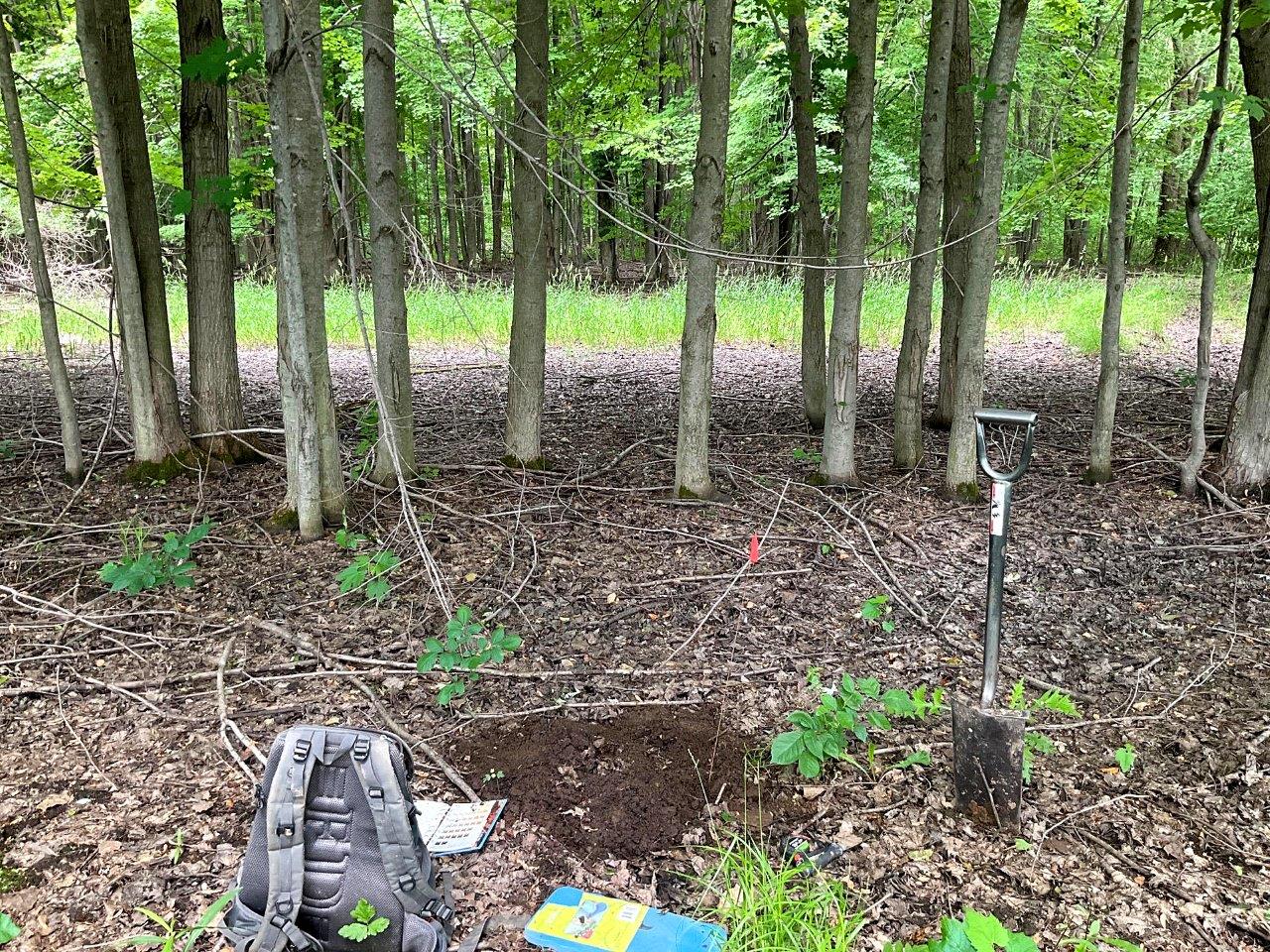Ephemeral Ponds: Nature’s Short-Lived Habitats with a Lasting Impact
Written By: Stacy Jepson
Post Date: 05-19-2025
Ephemeral Ponds: Nature’s Temporary Wonders and Their Importance
Hidden in forests, meadows, and low-lying areas, ephemeral ponds, also known as vernal pools, come to life for just a few months each year. These small, seasonal wetlands form as snow melts or heavy rains flood natural depressions in the land, providing a safe haven for amphibians, insects, and tiny aquatic creatures. While they disappear as the seasons change, their impact on ecosystems is lasting and significant.
Unlike permanent ponds and lakes, ephemeral ponds don’t hold water year-round, which means fish cannot live in them. Without fish, many amphibians, crustaceans, and insects have the perfect place to breed and grow before moving on to their next life stage. Despite their temporary nature, these ponds are critical for biodiversity, supporting creatures that couldn’t thrive elsewhere.
How Ephemeral Ponds Work
Ephemeral ponds have two distinct phases:
- The Wet Phase(Inundation):
During the spring, water collects in natural depressions, creating temporary pools. The water can last for weeks or months, depending on rainfall and temperature.
- The Dry Phase(Desiccation):
As temperatures rise and rainfall decreases, the water gradually disappears. By summer, the pond is often completely dry, leaving behind damp soil rich in nutrients.
Since fish need water year-round to survive, they can’t establish themselves in these ponds. That makes ephemeral ponds safe breeding zones for creatures that rely on calm, fish-free waters to reproduce.
Why Ephemeral Ponds Matter
These temporary wetlands play a crucial role in supporting wildlife, maintaining healthy ecosystems, and regulating nutrients in the environment.
Amphibian Breeding Grounds
Ephemeral ponds are essential for certain amphibians, like wood frogs and spotted salamanders. These species depend on seasonal pools to lay their eggs because the absence of fish reduces the risk of their young being eaten.
- Wood frogs migrate to ephemeral ponds early in spring, even when there’s still ice on the ground, and lay their eggs in large clusters.
- Salamanders emerge from hiding underground to deposit their eggs in the water, ensuring the next generation has a safe start in life.
Because these species rely so heavily on ephemeral ponds, they can signal changes in environmental health. If they suddenly stop appearing, it could be a warning that the ecosystem is being disrupted.
Tiny Creatures That Rely on Ephemeral Ponds
Besides amphibians, ephemeral ponds are home to unique invertebrates like fairy shrimp—tiny crustaceans that look a bit like miniature lobsters. Fairy shrimp survive by laying hardy eggs that can wait in the soil until the next rain fills the pond, bringing them back to life.
Other insects, like dragonflies and mosquitoes, also use these ponds to complete important parts of their life cycles. Dragonfly larvae develop underwater before emerging as adults to control insect populations, while mosquito larvae hatch and eventually become part of the food chain for birds and bats.
A Seasonal Water Source for Wildlife
During their wet phase, ephemeral ponds provide fresh drinking water for many animals, including deer, raccoons, and migratory birds. Ducks and herons use them as feeding areas, hunting for insects and amphibians to eat.
Even though the ponds dry up, the rich organic material left
behind helps nearby plants grow, ensuring food and shelter for local wildlife.
Threats to Ephemeral Ponds
Despite their importance, ephemeral ponds are at risk from
human activity and environmental changes.
Urban Development
As cities expand and new roads and buildings are constructed, many ephemeral ponds disappear. Since they are seasonal, people don’t always recognize them as important ecosystems, leading to their destruction.
Pollution
Runoff from farms, roads, and industrial areas can. contaminate ephemeral ponds with harmful chemicals. Excess nutrients from fertilizers can disrupt the balance of the ecosystem, making it harder for amphibians and other creatures to thrive.
Climate Change
Shifting weather patterns can cause ephemeral ponds to dry up too quickly or prevent them from forming at all. Warmer temperatures may reduce snowfall and rainfall, limiting the amount of water available to refill these ponds each year.
Habitat Fragmentation
Animals that depend on ephemeral ponds often travel between breeding and feeding sites. When roads, fences, and other developments cut through these areas, species like salamanders struggle to migrate, reducing their populations over time.
How to Protect Ephemeral Ponds
Scientists and conservationists are working to protect ephemeral ponds and the life they sustain.
Here’s how individuals and communities can help:
Preserving Wetland Habitats
Protecting forests and meadows where ephemeral ponds form helps ensure they remain a safe space for wildlife. Government programs and conservation groups work to preserve these areas, but community support is essential.
Reducing Pollution
Avoiding the use of harmful pesticides and fertilizers near
natural wetlands can help keep these ponds clean and safe for wildlife.
Educating Communities
The more people understand ephemeral ponds, the better they can advocate for their protection. Schools, nature centers, and environmental organizations can help spread awareness about the importance of these seasonal habitats.
Experiencing Ephemeral Ponds Firsthand
Seeing an ephemeral pond in action is a truly special experience. In early spring, wood frogs begin their loud calls, creating a chorus of sounds that signals their annual migration to breeding grounds. Salamanders, normally hidden beneath the forest floor, suddenly appear in great numbers to lay their eggs before vanishing again.
By summer, the pond shrinks, leaving behind a rich ecosystem that has adapted to seasonal changes. Watching how life thrives in these temporary habitats is a powerful reminder of nature’s resilience—and the importance of protecting even the most fleeting ecosystems.
Ephemeral ponds may be short-lived, but their impact on the environment lasts far beyond the seasons they exist in. As threats from development and climate change grow, conservation efforts must ensure these unique ecosystems continue to support the wildlife that depends on them.
